The sunflower (Helianthus annuus) is an annual plant with a large daisy-like flower face. Its scientific name comes from the Greek words helios (‘’sun’’) and Anthos (‘’flower’’).
The flowers come in many colors (yellow, white, red, purple, orange, maroon and green), but they are commonly bright yellow with brown centers that ripen into heavy heads filled with seeds. Sunflowers are considered to be the most popular flowers in the world.
White sunflowers are a variation of the traditional yellow sunflower. They are characterized by white petals and yellow/brown centers. They are actually a symbol of purity and elegance. They are very good in defining or enhancing serenity to any garden or floral arrangement.
They too have similar characteristics as yellow sunflowers with ability to grow quickly and tall. They also have large, thick stalks that can make them quite sturdy.
These beautiful flowers come in a variety of shapes, sizes and patterns. In this article, I will discuss the different types of white sunflowers, highlighting their unique characteristics in the quest of differentiating them from one another. You’ll also learn about the best uses of these sunflowers.
List of White Sunflowers
- ProCut Flower Lite
- Moonshadow Sunflower
- Italian White Sunflower
- Coconut ice sunflower
- ProCut White Nite
- Strawberry Blonde Sunflower
What You Need To Know About White Sunflowers
- They have white petals with a yellow center, giving them a classic and elegant appearance.
- The plant has an erect rough-hairy steam.
- Sunflower leaves are broad, coarsely toothed, rough and mostly alternate; those near the bottom are largest and commonly heart-shaped.
- They can vary in size, with some varieties reaching heights of 4-6 feet, while others can reach up to 8 feet tall.
- They typically bloom during the summer and early fall.
- White sunflowers are pollinated by bees, butterflies and other insects, making them great for attracting pollinators to your garden.
- White sunflowers prefer full sun and need at least 6 hours of direct sunlight per day to thrive.
- They prefer well-drained soil that is rich in organic matter.
- White sunflowers grow faster taking three to four months to mature depending on the variety.
- They need to be kept consistently moist, but not waterlogged.
- White sunflowers are popular as cut flowers and are also used in gardens as a focal point, in borders or as part of a wildflower meadow. They also can be used in oil production, as food and as bird feed.
- White Sunflowers are heliotropic, which means that they turn their flowers to follow the movement of the Sun across the sky east to west, and then returns at night to face the east, ready again for the morning sun. Heliotropism happens during the earlier stages before the flower grows heavy with seeds.
Description of Different Varieties of White Sunflowers
ProCut White Lite
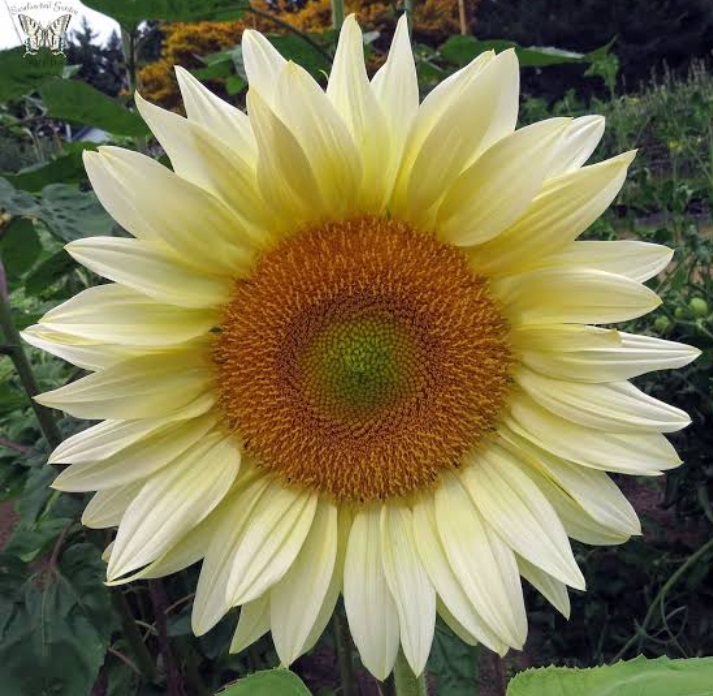
This is a pollenless hybrid sunflower featuring large, white blooms with yellow centers. The flowers can reach up to 8 inches in diameter and are usually borne on tall, slender stalks that can grow up to 6-8 feet in height.
It is a popular choice for cut flowers, as it produces a large number of blooms and has a long vase life. Flowers appear on the branching stems over a long period in summer.
Also Read: Types of Dwarf Sunflowers
Moonshadow Sunflower
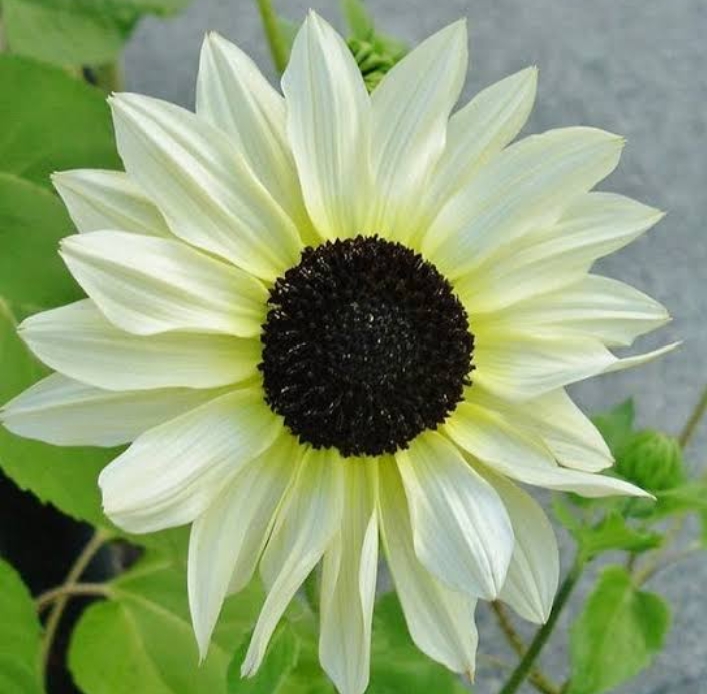
Moonshadow is a medium height variety featuring white petals and dark/brown centers. The white petals of these sunflowers are a nice contrast to the dark chocolate center of the flower, and they can also be used to lighten up a garden or landscape. This hybrid is pollenless, matures early and grows to a height of between 3 to 4 feet.
Italian White Sunflower

Italian white sunflower, also known as “giants of Italy,” is an beautiful plant especially when grown as a focal point in the garden. The flowers have a deep chocolate eye, somewhat ruffled white petals and a ring of primrose. They can grow up to 7 feet tall and have blooms that can reach up to 10 inches in diameter.
They are native to Italy and have been cultivated for centuries for their ornamental value. They are often planted in the spring and bloom in the summer.
They too are drought tolerant and thrive in full sun. They can be used for cut flowers, as well as for bird seed. Seeds from the flower heads can be collected for re-sowing the following year.
Coconut Ice Sunflower
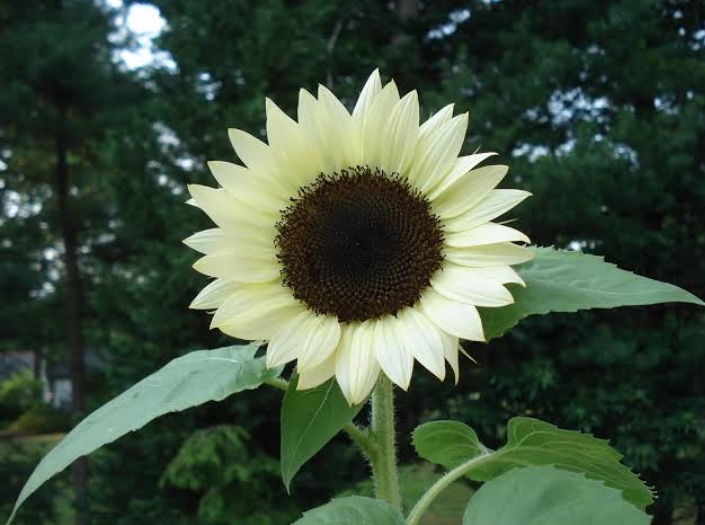
Coconut ice sunflower is a hybrid variety which is excitingly beautiful featuring white petals and a dark brown center. Its petals emerge in a creamy off-white color and then quickly evolve into a bright white hue.
This variety can grow up to 6 feet tall with single-headed blooms that can be between 4 and 8 inches. It is can be good for attracting pollinators to the garden.
ProCut White Nite
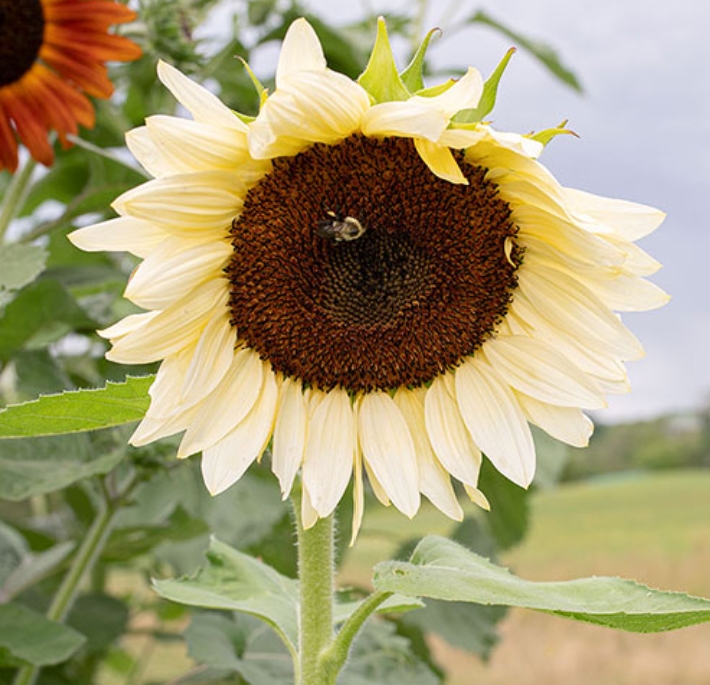
White Nite is a hybrid variety featuring creamy pale yellow, almost-white petals and a dark center. The plant is sturdy and average about 6 or 7 feet tall. This single-stemmed variety is pollenless and bred for commercial cut flower production.
It also works well for attracting pollinators and beneficial insects to the vegetable garden. This variety combines well with other soft or vivid color plants or flowers.
Also Read: Different Types of Red Sunflowers
Strawberry Blonde Sunflower
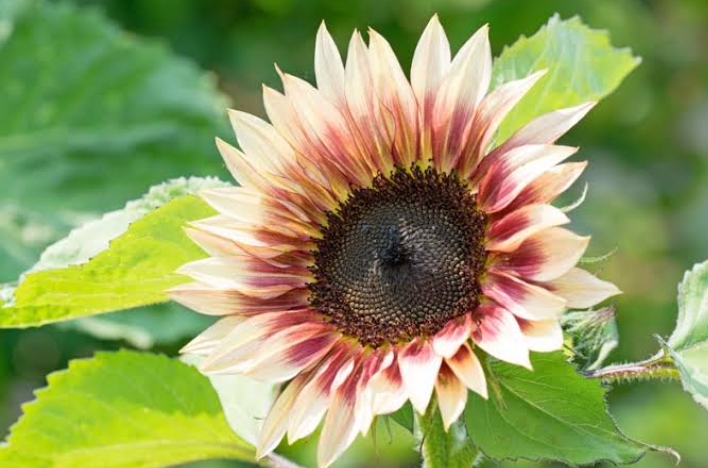
Strawberry Blonde is one of the rare and amazingly beautiful variety of sunflower. They are just gorgeous no matter if they’re standing alone or paired together in a vase.
Strawberry blonde is characterized by pink and burgundy colors as well as hints of creamy-white, around the dark disk. The petals fade into yellow shades as they move away from the center. It almost looks like a sunset bursting from every flower. The flower heads are attractive to bees, butterflies and birds.